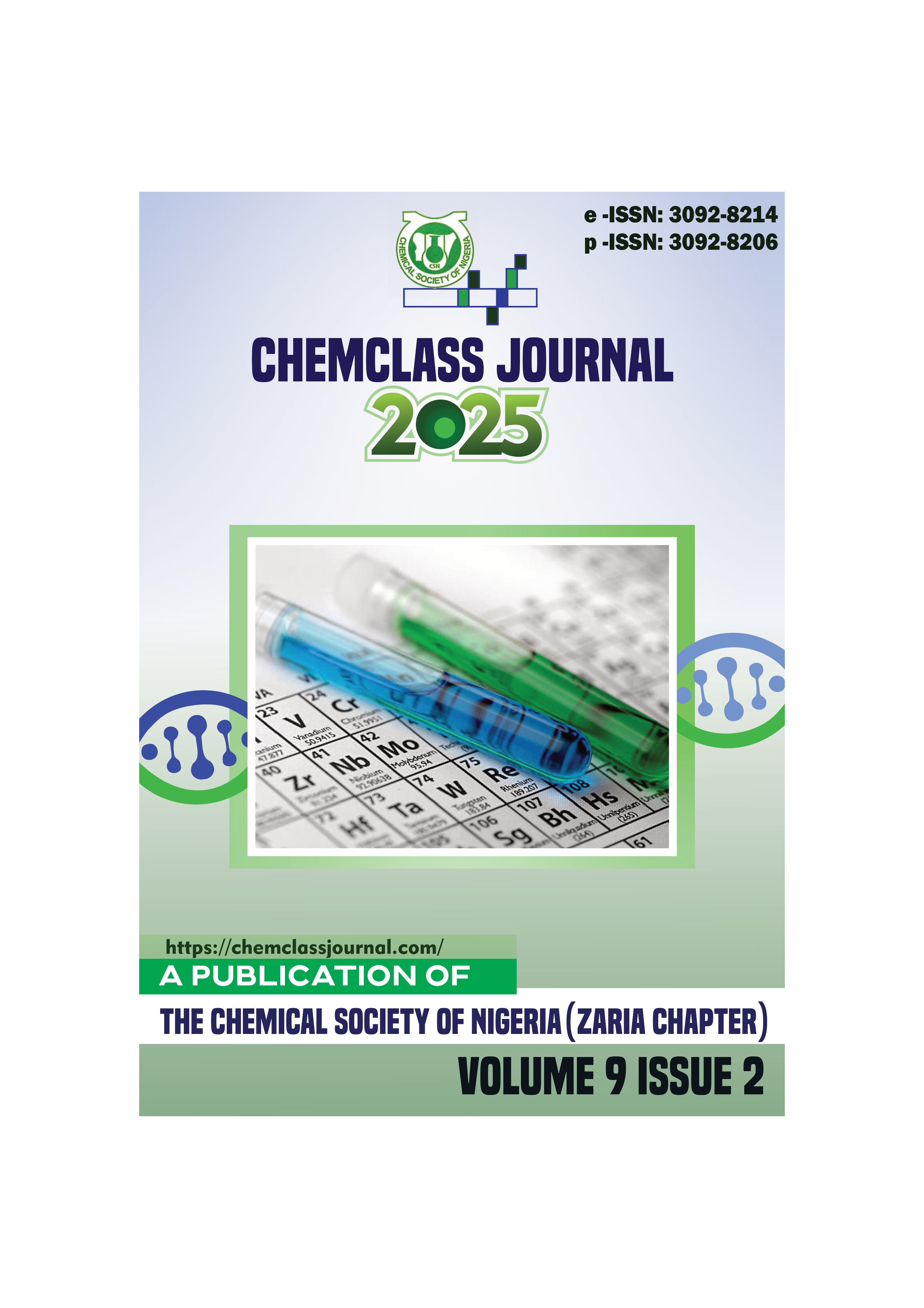Health Risk Assessment of Selected Heavy Metals Along the Ethiope River in Delta State, Nigeria
DOI:
https://doi.org/10.33003/chemclas-2025-0901/154Keywords:
Assessment , water quality , concentration , River Ethiope, health risk , heavy metalsAbstract
Human activities and processes degrade water quality. Early detection of threats from contaminated water
can protect all aspects of life and habitat degradation. The concentration and health risk assessment of
selected heavy metals (Cu, As, Ni, Cr, Pb, Hg, and Cd) were investigated in the surface water samples of
River Ethiope. Water samples were collected along its banks at the following towns; Umuaja (SWI), Ebedie
(SW2), Abraka (SW3), Sapele (SW4) and Ughara (SW5) axis during the rainy season; June to October,
2023. The heavy metal contents, heavy metal pollution index (HPI) and risk assessment were determined
using standard methods of analysis. Descriptive analysis and analysis of variance were employed for data
interpretation of results. The results revealed concentration values of 0.004 mg/l for Pb and Cr to 0.020
mg/l for Cu. The observed highest concentrations of Cu (0.0133 mg/l), Pb (0.007 mg/l) at locations SW4,
SW5 and SW3 may be attributed to the anthropogenic activities including domestic and mainly industrial
wastewater discharges and runoff. All metals analyzed were within the WHO permissible limits for portable
water. Heavy metal pollution index (HPI) was computed for stations SW3, SW4 and SW5, however, none
for SW1 and SW2 as the parameters of interest were not detected. The HPI values 5.612, 10.750 and 7.796
for stations SW3, SW4 and SW5 respectively were below 100 which showed a low level of heavy metal
contamination and will not adversely affect health. Estimated human health risk from each metal
contamination from adsorption and consumption of the River Ethiope gave each of hazard quotient (HQ)
and hazard index (HI) values of < 1. It is therefore obvious from the results that the observed values were
below the safe limit of one, suggesting that there was no potential adverse risk in water sampled via direct
ingestion or dermal adsorption to the inhabitants.





 ChemClass Journal
ChemClass Journal
